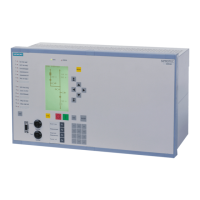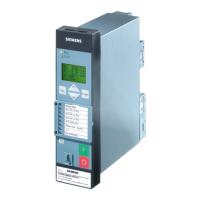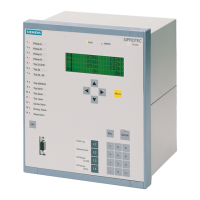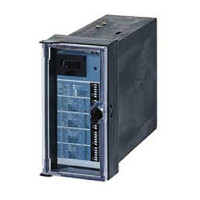Failure of the measuring voltage in one or two phases can be detected, and the directional time overcurrent
elements (Dir Phase and Dir Ground) can be blocked, see logic diagrams.
Undervoltage protection, sensitive ground fault detection and synchronization are also blocked in this case.
Dynamic Cold Load Pickup Function
It may be necessary to dynamically increase the pickup values of the directional time overcurrent protection if,
at starting, certain elements of the system show an increased power consumption after a long period of zero
voltage (e.g. air-conditioning systems, heating installations, motors). Thus, a general raise of pickup thresh-
olds can be avoided taking into consideration such starting conditions.
This dynamic pickup value changeover is common to all overcurrent elements and is described in Section
2.4 Dynamic Cold Load Pickup. The alternative pickup values can be set individually for each element of the
directional and non-directional time overcurrent protection.
Inrush Restraint
7SJ62/64 features an integrated inrush restraint function. It prevents "normal" pickup of the 67-1 or 67-TOC
elements (not 67-2 and 67-3) in the phases and in the ground path of the non-directional and directional
overcurrent protection functions. The same is true for the alternative pickup thresholds of the dynamic cold
load pickup function. If inrush currents are detected, special inrush pickup signals are generated. These signals
also initiate fault recording and start the associated trip delay time. If inrush conditions are still present after
the tripping time delay has elapsed, a corresponding message ("....TimeOut ") is output, but tripping is
blocked (for further information see "Inrush Restraint" in Section 2.2 Overcurrent Protection 50, 51, 50N,
51N).
Determination of Direction
The determination of the fault direction for the phase directional element and the ground directional element
is performed independently.
Basically, the direction determination is performed by determining the phase angle between the fault current
and a reference voltage.
Method of Directional Measurement
For the phase directional element the fault current of the corresponding phase and the unfaulted phase-
tophase voltage are used as reference voltage. The unfaulted voltage also allows for a correct direction deter-
mination even if the fault voltage has collapsed entirely (short-line fault). In phase-to-ground voltage connec-
tions, the phase-to-phase voltages are calculated. In a connection of two phase-to-phase voltages and V
N
, the
third phase-to-phase voltage is also calculated.
With three-phase short-line faults, memory voltage values are used to clearly determine the direction if the
measurement voltages are not sufficient.Upon the expiration of the storage time period (2 s), the detected
direction is saved, as long as no sufficient measuring voltage is available. When closing onto a fault, if no
memory voltage values exist in the buffer, the relay element will trip. In all other cases the voltage magnitude
will be sufficient for determining the direction.
For each directional ground element there are two possibilities of direction determination.
Direction Determination with Zero Sequence Calculated or Measured Quantities
For the directional ground fault elements, direction can be determined by comparing the zero sequence
system quantities. In the current path, the Ι
N
current is valid, when the transformer neutral current is
connected to the device. Otherwise, the device calculates the ground current from the sum of the three phase
currents. In the voltage path, the displacement voltage Ι
N
is used as reference voltage, if it is connected.
2.3.6
2.3.7
2.3.8
Functions
2.3 Directional Overcurrent Protection 67, 67N
SIPROTEC 4, 7SJ62/64, Manual 93
C53000-G1140-C207-8, Edition 08.2016

